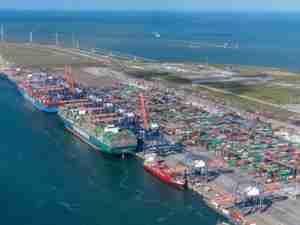"There would be an industrial logic in that deal," CEO Pekka Lundmark said in an interview during a visit to New York. "I'm not planning any hostile moves or anything like that today. We approached them. They said no. Fine."
Demag shares have rallied since early October, when Konecranes said it was interested in a merger. Demag confirmed it had received informal approaches from companies based in foreign countries, but said it preferred a "standalone strategy."
Konecranes, whose technology is used in factories, energy facilities and ports, has made 10 acquisitions so far this year, as many as in all of 2009, but this year's deals have been slightly larger, Lundmark said.
"We have not participated in any larger transformational deals, (but) we want to keep an open mind," he said.
A merger of Konecranes and Demag would create a maker of cranes with about 15,000 workers and annual sales of 2.6 billion euros ($3.55 billion). Demag has a market value of about 771 million euros ($1.05 billion), compared with Konecranes' market cap of about 1.8 billion euros ($2.5 billion).
"This is such a fragmented industry that there is potential for consolidation. We are happy with the organic and bolt-on strategy, but it would be stupid not to keep your eyes open for larger opportunities."
Konecranes -- whose peers also include U.S.-based Columbus McKinnon and Japan's Kito -- will hold its capital markets day next week in Finland, during which it will focus on its growth strategy, expansion plans in services, and provide an acquisitions update, the CEO said.
Konecranes shares rose 1.3 percent to 30.28 euros on Friday. Demag gained 0.2 percent to 36.53 euros.
Re Markets
A shift toward more automation is driving demand. The towering machines that dot the horizon around ports, moving containers on and off ships, can now be controlled remotely. Crane makers need scale to invest in software and other new technology, so consolidation is key to long-term growth.
The United States remains the company's largest market, followed by China and Germany. U.S. ports, despite a large trade deficit, have started to upgrade their infrastructure, for example in automation, even though earlier investments have left ports with excess capacity.
"They did not want to modernize in 2009, when it didn't matter if you had (inefficient) equipment, but now it's starting to matter again," Lundmark said.
The overall global equipment market Konecranes serves dropped by half in 2009 from 2008 as industrial production and shipping slumped. From the lows, it has recovered about half those losses, led by emerging markets.
Konecranes last month reported higher-than-expected sales and profits, while orders met forecasts.
Orders rose sequentially in the past two quarters. Lundmark said he was cautiously optimistic the trend would continue.
"There is recovery, but it's modest at best," he said.
Services -- now about 40 percent of total company sales -- could grow to half within two to three years, as customers in developed industrial nations stress maintenance of existing equipment over new capital investments.
In Nordic countries and North America, services already account for the bulk of Konecranes' business as users look to offset high labor costs by making systems more efficient. Industrial and port customers in emerging markets continue to buy new equipment.
Targeting Emerging Markets
Konecranes has four factories in China and is looking at targets there to grow in a crane market that is fast becoming the world's largest, as shipping traffic follows manufacturing inland. Most such acquisitions targets are small.
Konecranes' sales in Africa, now less than 10 percent of the total, are expected to double this year from 2009 levels, reflecting Chine










